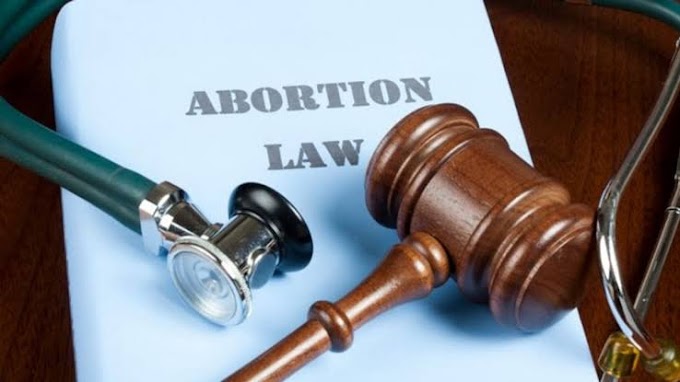Navigating the Legal Landscape of Passive Euthanasia in India: Rights, Ethics, and Controversies
Article - Shivanshi Shukla, a Student of University of Petroleum and Energy Studies
Introduction
The intersection of law, ethics, and medicine has been a subject of intense debate in India, especially concerning end-of-life decisions. Passive euthanasia, which involves the withholding or withdrawal of life-sustaining treatment, is at the core of this discussion. The right to die with dignity is a basic right, according to the Supreme Court, which has recognised "living wills" created by terminally ill people.
This article explores the legal landscape surrounding passive euthanasia in India, examining the rights of patients, the ethical considerations, and the controversies surrounding this complex issue, with reference to significant Indian case laws that have shaped the discourse.
Previous Judgements- In the case of Gian Kaur v. State of Punjab, a five-judge panel presided over by Justice J. S. Verma had ruled in 1994 that both assisted suicide and euthanasia were illegal. The bench overturned the two-judge bench finding in P. Rathinam v. Union of India, which declared section 309 of the Indian Penal Code (attempt at suicide) to be unconstitutional. The bench claimed that the right to life did not include the right to die.
In the Gian Kaur case, the supreme court ruled that Article 21 refers to "life with dignity" and that only elements of life that contribute to its dignity may be incorporated into this article, indicating that the right to die is incompatible with it.
I. The Landmark Judgment: Aruna Ramchandra Shanbaug vs. Union of India (2011)
The legal landscape of passive euthanasia in India saw a significant shift with the landmark judgment in the case of Aruna Ramchandra Shanbaug vs. Union of India (2011). Aruna Shanbaug, a nurse who had been in a persistent vegetative state for over four decades, became a symbol of the ethical and legal challenges surrounding passive euthanasia. The Supreme Court of India, in this judgment, recognized the concept of passive euthanasia and laid down guidelines for its implementation.
The Court held that passive euthanasia could be permitted under specific conditions, which included obtaining the approval of the High Court and forming medical boards to assess the patient's condition. This case marked a significant departure from the previous stance, where passive euthanasia was largely considered illegal in India.
II. The Role of Advance Directives: Common Cause (A Regd. Society) vs. Union of India (2018)
Advance directives, also known as 'living wills,' play a pivotal role in passive euthanasia cases. According to a five-judge bench of the apex court headed by then Chief Justice of India Dipak Misra and comprising Justices A.K. Sikri, A.M. Khanwilkar, D.Y. Chandrachud and Ashok Bhushan, issued guidelines in recognition of “living will” made by terminally-ill patients. In the case of Common Cause (A Regd. Society) vs. Union of India (2018), the Supreme Court of India recognized the legality of advance directives, allowing individuals to specify their preferences for medical treatment in case they become incapable of making decisions in the future.
The judgment emphasized the importance of respecting the autonomy of patients and their right to die with dignity, provided that the procedure for drafting and executing the advance directive is clear and complies with the law.
III. The Ethics of Passive Euthanasia: The Case of Aruna Shanbaug
The Aruna Shanbaug case was not only a legal milestone but also a significant ethical dilemma. It raised questions about the appropriateness of continuing life-sustaining treatment when the patient is in a persistent vegetative state with no chance of recovery. The judgment in this case highlighted the importance of balancing the patient's right to die with dignity and the ethical obligations of healthcare providers.
IV. Controversies Surrounding Passive Euthanasia
Despite the legal framework established by the Supreme Court, passive euthanasia in India remains a controversial issue. Disputes often arise regarding the interpretation and application of the guidelines set forth in the Aruna Shanbaug judgment. Additionally, concerns about potential misuse of advance directives and the need for safeguards continue to be subjects of debate.
V. Ongoing Debates: The Need for Legislation
The legal landscape of passive euthanasia in India remains in flux, primarily because it relies heavily on judicial decisions rather than comprehensive legislative provisions. While the Supreme Court's guidelines provide a framework, many experts and activists argue that a dedicated law on euthanasia is necessary to address the complexities and nuances of end-of-life decisions.
Conclusion
The legal landscape of passive euthanasia in India has evolved significantly in recent years, with landmark judgments providing a framework for respecting individual autonomy and the right to die with dignity. The Aruna Shanbaug case recognized passive euthanasia under specific conditions, while the Common Cause case validated advance directives, giving individuals more control over their medical decisions.
However, controversies and ethical dilemmas surrounding passive euthanasia persist. The need for a comprehensive euthanasia law, which includes safeguards against abuse and clear procedures for implementation, is an ongoing debate in India. As the country grapples with these complexities, it is essential to strike a balance between respecting individual rights, addressing ethical concerns, and providing legal clarity to navigate the intricate legal landscape of passive euthanasia in India.




![Freedom of Speech in India [Indian Supreme court and Law of Sedition]](https://blogger.googleusercontent.com/img/a/AVvXsEiGLLUmLKq5Da6xDZplasOZHKRj-jOhWPkoeuy0_Eq757tUpOiHz-xooXwIlAjF0-hmBfi-TtMIv6on_sVgBXVq4wbWwnbsqLOcNX22S8C2aSq-ZuK3vn9wWAx8tXByYOBfwc0hs6b8RJV84YNFG2greouGKjup6g8kN-xVlchW33VHdSSmrhLC1BUEVbGp=w680)





